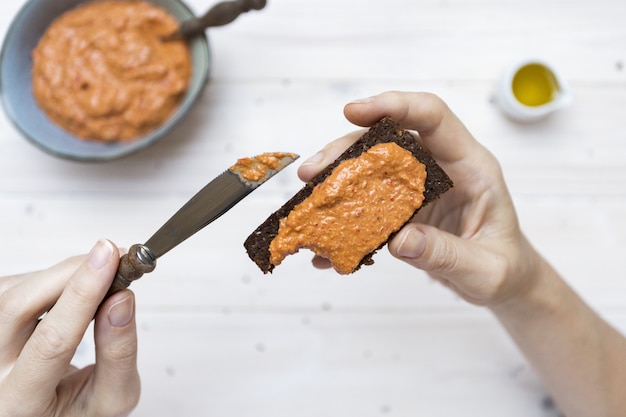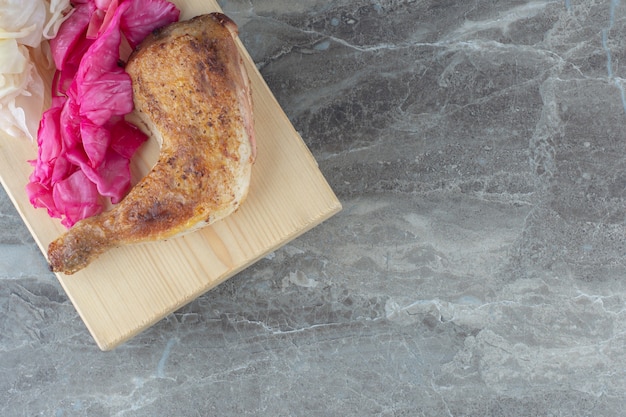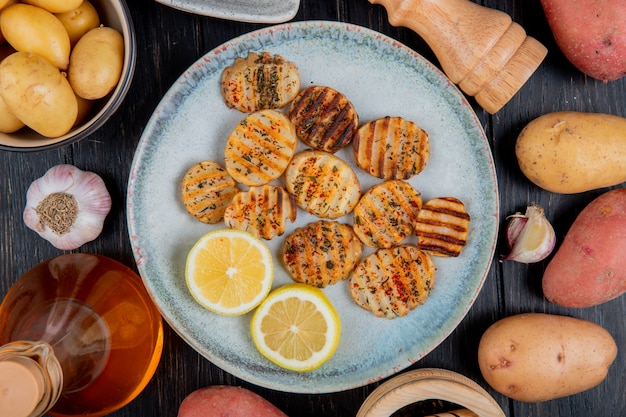Ah, breaded pork chops! Just the thought of them sends my taste buds into a frenzy. Remember those crispy, golden-brown beauties straight from the oven, sizzling and smelling divine? I can still picture my grandma's kitchen, filled with the warmth of the oven and the irresistible aroma of her signature dish. She always used to say, "A good pork chop is all about the crispness," and boy, was she right! But finding the perfect cooking time for these little gems can be a bit of a culinary puzzle, especially for those who aren't seasoned cooks. It's not just about getting them cooked through, it's about achieving that perfect balance of juicy inside and crispy outside. That's why I'm diving deep into the art of baking breaded pork chops, sharing my personal experiences, and offering some tried-and-true tips to help you achieve those restaurant-worthy results.
Part 1: Deconstructing the Breaded Pork Chop: Understanding the Ingredients

1.1: The Humble Pork Chop - A Culinary Canvas
Let's start with the star of the show: the pork chop itself. Choosing the right chop is like selecting the perfect canvas for your masterpiece. For breaded pork chops, you'll want to choose a chop that's not too thin or too thick. Thin chops will cook too quickly, potentially leading to dryness, while thick chops require longer cooking times, which can also lead to overcooking. My go-to choice is usually a chop that's about 1/2 to 3/4 inch thick. This allows for a nice balance between cooking time and achieving that juicy, tender center.
1.2: The Breadcrumb - A Crunchy Armor
Now, let's talk about the breadcrumb coating, the protective armor that gives our pork chops that irresistible crispy texture. Breadcrumbs aren't just for texture; they act as a barrier, trapping moisture within the pork and preventing it from drying out during cooking. But that's where the fun (and sometimes, the challenges) begin. The type of breadcrumb you use plays a crucial role in how your pork chop will bake.
Here’s a quick rundown of the most common breadcrumb types:
- panko breadcrumbs: These large, airy flakes create a light and crispy crust. They're excellent for achieving a wonderfully airy texture that won't become soggy. Panko is my favorite for this reason, as it holds its crispness beautifully even after the chops are cooked.
- Fine Breadcrumbs: These offer a more compact and dense crust. They're great for achieving a crisp texture but might not be as airy as panko. They're also good for binding the coating tightly to the pork chop.
- Homemade Breadcrumbs: You can also make your own breadcrumbs by using stale bread. The crust will have a slightly heartier texture, but the flavor can vary depending on the type of bread you use. This is a fantastic option if you're looking to reduce food waste and add a personal touch to your dish.
1.3: The Breading Process - A Symphony of Flavors
Before we move on to the cooking part, let's talk about breading. The breading process is where the magic happens, where the pork chop gets its protective coat and absorbs a symphony of flavors. A good breading technique ensures that the coating adheres firmly to the chop, creating a crispy barrier that prevents moisture loss.
Here's a simple, but effective breading technique I always use:
- Dredge in Flour: Begin by lightly dredging the pork chop in flour. This will help the breadcrumbs adhere more firmly.
- Dip in Egg Wash: Next, dip the floured chop into an egg wash. You can use a simple egg wash made with one beaten egg and a tablespoon of milk or water. The egg acts as a binder, helping the breadcrumbs stick to the pork.
- Coat with Breadcrumbs: Finally, coat the chop with breadcrumbs, pressing them on firmly to ensure a good coating.
A good tip for even coating is to use your fingers to press the breadcrumbs onto the pork chop. This helps to create a more consistent crust.
Part 2: Setting the Stage: The Role of the Oven

Your oven is the ultimate collaborator in this culinary adventure. Just as a stage needs the right lighting and sound system, your oven needs to be properly preheated and ready to create the perfect environment for your breaded pork chops.
2.1: Preheating - The Key to Consistent Baking
Preheating your oven is a non-negotiable step. Think of it as warming up your vocal cords before a performance. A consistently heated oven ensures that the breadcrumb coating cooks evenly, developing that beautiful golden-brown hue and achieving the perfect level of crispness. I always preheat my oven to 350°F (175°C) for at least 10 minutes before baking. This allows the oven to reach the desired temperature and ensures that the heat is distributed evenly.
2.2: Oven Temperature - A Matter of Precision
The oven temperature you choose will affect the cooking time and the final result. A higher temperature will cook the chops faster but may lead to a slightly drier result. A lower temperature will take longer to cook, but it will result in a more tender and juicy chop. I find that 350°F (175°C) is a good starting point for most breaded pork chops.
2.3: Oven Placement - Finding the Sweet Spot
The placement of your baking sheet in the oven also matters. I always place my chops on a baking sheet with a rack underneath. This allows air to circulate around the chops, promoting even cooking and helping them achieve that lovely, crispy crust. You'll want to make sure that the rack is positioned in the center of the oven for optimal heat distribution.
Part 3: Mastering the Timing: A Practical Guide to Cooking Time

Now, let's get to the heart of the matter: determining the perfect cooking time for your breaded pork chops. As I mentioned earlier, the thickness of the chop plays a crucial role. Think of it as a musical piece; the length of the piece determines how long it takes to play. Thick chops will take longer to cook than thin ones, so adjusting your cooking time accordingly is essential.
3.1: The "Golden Rule" of internal temperature
The most reliable way to determine if your pork chops are cooked through is to check their internal temperature. You're aiming for an internal temperature of 145°F (63°C). This ensures that the pork is safe to eat and cooked to a delicious level of doneness. I always use a meat thermometer to check the internal temperature, especially in the thickest part of the chop. This gives me the most accurate reading and prevents me from overcooking or undercooking my chops.
3.2: The "Approximate" Cooking Time Guide
While the internal temperature is the ultimate guide, a general guideline for cooking times can be helpful. Here's a table I use to determine the approximate cooking times for breaded pork chops based on their thickness. Remember, these are just estimates; always check the internal temperature to be sure.
| Chop Thickness | Estimated Cooking Time (Oven 350°F/175°C) |
|---|---|
| 1/2 inch | 15-20 minutes |
| 3/4 inch | 20-25 minutes |
| 1 inch | 25-30 minutes |
3.3: The "Flip" Trick for Even Browning
Here’s a little trick I’ve learned over the years for extra crispiness. For even browning, flip those pork chops halfway through the cooking time. This allows both sides to get a nice, even golden-brown hue, making the crust even more delectable.
Part 4: Preventing Dryness: Secrets to juicy pork chops
We've all been there: dry, tough pork chops are a culinary tragedy. But fret not! With a few simple tricks, you can avoid this unfortunate outcome and ensure that your pork chops are juicy and flavorful.
4.1: The Brining Technique - Infusing Moisture
Brining is a game-changer when it comes to juicy pork chops. It involves soaking the chops in a salty solution for a few hours, which helps retain moisture and adds flavor.
Here's how to brine your pork chops:
- Prepare the Brine: In a large bowl or container, mix together 1 cup of salt, 1/2 cup of sugar, and 8 cups of water.
- Submerge the Chops: Add the pork chops to the brine and ensure they are fully submerged.
- Refrigerate: Cover the container and refrigerate for 2-3 hours.
- Rinse and Dry: After brining, remove the chops from the brine, rinse them thoroughly under cold water, and pat them dry with paper towels.
The result? Juicy, flavorful pork chops that practically melt in your mouth.
4.2: Avoiding Overcooking - The Key to Tenderness
Overcooking is the number one enemy of juicy pork chops. Remember to check the internal temperature frequently and remove the chops from the oven when they reach 145°F (63°C). Don't be tempted to cook them longer in hopes of extra crispiness, as that will only result in dry and tough pork.
4.3: The Resting Ritual - Allowing Juices to Redistribute
After you take the pork chops out of the oven, let them rest for 5-10 minutes before serving. This allows the juices to redistribute throughout the meat, resulting in more tender and flavorful chops. I usually cover them loosely with foil to keep them warm while they rest.
Part 5: Elevating the Flavor: Exploring flavor combinations and Garnishes
Once you've mastered the perfect cooking time and achieved that delightful crispy crust, it's time to get creative with flavors and garnishes, adding your personal touch to this culinary masterpiece.
5.1: Classic Herb Combinations - A Symphony of Aromas
You can't go wrong with classic herb combinations. Try a mixture of rosemary, thyme, and garlic. This adds a wonderful, aromatic flavor that complements the pork perfectly. I often add a squeeze of lemon juice to cut through the richness of the pork.
5.2: Sweet and Spicy - A Bold and Flavorful Contrast
For a bolder flavor profile, try a sweet and spicy combination. I love to use a mixture of brown sugar, chili powder, and paprika. The sweet and spicy notes create a delicious contrast that's both savory and satisfying.
5.3: Citrusy Zing - A Refreshing Twist
For a refreshing twist, try a citrusy glaze. I often use a combination of orange juice, honey, and ginger. This glaze adds a bright, tangy flavor that complements the pork beautifully.
5.4: Garnishing for That Extra Touch - Finishing the Artwork
Don't forget the garnishes! A sprinkle of chopped parsley or a few sprigs of rosemary adds a touch of freshness and elegance. I also love to garnish with a squeeze of lemon or a drizzle of honey.
Part 6: Serving Suggestions - Creating a Culinary Ensemble
Now that your breaded pork chops are cooked to perfection, it's time to serve them up!
6.1: The Classic side dish - A Simple but Delicious Harmony
You can't go wrong with a classic side dish like mashed potatoes, roasted vegetables, or a simple green salad. These sides provide a nice balance to the richness of the pork chops.
6.2: A Flavorful Twist - Adding Depth and Complexity
For something a little different, try a side dish with a flavorful twist. I love to serve my pork chops with a creamy mushroom sauce or a tangy apple-cranberry chutney. These sides add complexity and depth to the meal, creating a delightful culinary ensemble.
Part 7: FAQs - Addressing Common Culinary Queries
Here are a few frequently asked questions about breaded pork chops:
7.1: How Do I Store Breaded Pork Chops?
Breaded pork chops can be stored in the refrigerator for up to 2 days. Place them on a plate or in a container lined with paper towels to absorb any excess moisture. When ready to cook, let them come to room temperature before baking.
7.2: Can I Freeze Breaded Pork Chops?
Yes, you can freeze breaded pork chops. Place them in a freezer-safe bag or container and freeze for up to 3 months. When ready to cook, thaw them in the refrigerator overnight. Make sure to cook them thoroughly from frozen.
7.3: What if My Breaded Pork Chops Are Undercooked?
If your pork chops are undercooked, return them to the oven for a few more minutes. Always check the internal temperature to ensure they reach 145°F (63°C).
7.4: What If My Breaded Pork Chops Are Overcooked?
If your pork chops are overcooked, there's not much you can do to save them. However, try to avoid overcooking them in the first place by checking the internal temperature frequently.
7.5: What Should I Do With Leftover Breaded Pork Chops?
Leftover breaded pork chops can be enjoyed in a variety of ways. Try adding them to a salad, serving them on a sandwich, or using them in a pasta dish.
With a little practice, you'll be a pro at baking delicious, golden-brown pork chops that are cooked to perfection. So go ahead, unleash your culinary creativity and enjoy the satisfying crunch and juicy goodness of a perfectly baked breaded pork chop. Happy cooking!
Everyone is watching

Prime Rib Roast Cooking Time Chart: Per Pound Guide
Cooking TipsPrime rib roast. Just the name conjures images of lavish dinners, crackling fires, and hearty laughter. It’s ...

How Long to Bake Potatoes in the Oven (Perfect Every Time)
Cooking TipsBaked potatoes are a staple in my kitchen. They're incredibly versatile, delicious, and surprisingly easy to m...

Perfect Rice Every Time: The Ultimate Guide to Cooking Rice
Cooking TipsAs a self-proclaimed foodie, I've always been a bit obsessed with rice. It's the foundation of countless cuisi...

The Ultimate Guide to Cooking Asparagus: Tips, Techniques, and Recipes
Cooking TipsAsparagus. The mere mention of this spring delicacy conjures up images of vibrant green spears, crisp and burs...

Ultimate Guide to Cooking the Perfect Thanksgiving Turkey
Cooking TipsThanksgiving. Just the word conjures up images of overflowing tables laden with delicious food, the scent of r...
